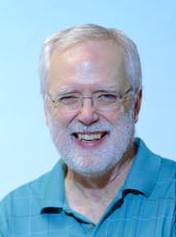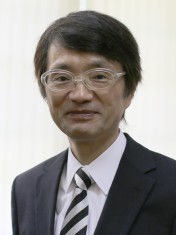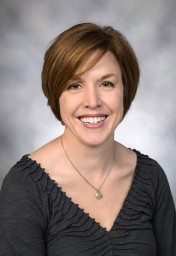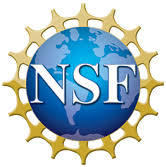Perspective Talks

|
A Perspective on Service Robotics Henrik I. ChristensenUC San Diego |
|---|---|
|
ABSTRACT
Service robotics has made tremendous progress over the last decade. In particular the home market has seen more than 10 million vacuum cleaners sold and in the professional market delivery robots such as KIVA and Aethon have demonstrated remarkable robustness. It is, however, characteristic that the solutions demonstrated are all about mobility with little to no physical interaction. Metric based navigation is by now a mature technology and for specific solutions reliability engineering has enabled long-term robustness. However we have seen limited progress on mobility involving semantic understanding of the environment and manipulation of objects in real-world environments is still a major challenge. There is both a lack of more general purpose grippers, tactile / haptic sensors and methods for manipulation of a broader set of objects, in particular in general environments, where perception also poses a challenge. In addition the user interfaces for these systems are still primitive at best. We have seen tremendous progress on NLP based interfaces for gadgets, such as Alexa, yet the same functionality has not yet been transitioned to most service robot applications. Without adequate attention to human-robot interaction it is not clear we will enter the mainstream service market. In this presentation we will review the service robotics domain and provide a discussion about opportunities and challenges to progress. |
|
|
BIO
Henrik I Christensen is the Qualcomm Chancellor’s Chair in Robot Systems and a professor of computer science at UC San Diego. He is also the director of the Contextual Robotics Institute. His research is centered around a systems approach to robotics. he has published more than 350 contributions across robotics, computer vision and artificial intelligence. He was the editor for the US National Robotics Roadmap 2009, 2013 and 2016. He serves on the editorial board of 6 journals and is the co-editor-in-chief of Trends and Foundations in Robotics. |
|

|
A Perspective on Manipulation and Evolution |
|
ABSTRACT
Robotic manipulation is often inspired by human manipulation. While manipulation is common in the animal world, humans are much more skillful at throwing and toolmaking. No animal comes close to humans in a rock-throwing contest. These skills developed through several million years of evolution. One key development was evolution's invention of effector modularity. Rather than choosing a claw or other specialized effector, evolution delegated the choice of effector to the individual. When you need a knife, you pick up a knife. When you need a missile, you pick up a rock or a spear. That was the beginning of human tool selection and tool making -- the beginning of engineering. To some extent the requisite behaviors are encoded in our genes, so that effector designs were shaped by natural selection, just as our morphology adapted to take better advantage of our tools. In short, we co-evolved with our tools. |
|
|
BIO
Matthew T. Mason earned the BS, MS, and PhD degrees in Computer Science and Artificial Intelligence at MIT, finishing his PhD in 1982. Since that time he has been on the faculty at Carnegie Mellon University. He was Director of the Robotics Institute from 2004 to 2014, and is presently Professor of Robotics and Computer Science. His primary interest is robotic manipulation. He is a Fellow of the AAAI, and a Fellow of the IEEE. He is a winner of the System Development Foundation Prize, the IEEE RAS Pioneer Award, and the 2018 IEEE Robotics and Automation Award. |
|

|
A Perspective on Biomechanics Horizon in the Light of Robotics Computation Yoshihiko NakamuraUniversity of Tokyo |
|---|---|
|
ABSTRACT
Humanoid robotics has extended the field of robotics research by highlighting similarity of appearance and movements to the human beings. The computational theory and method have co-evolved with the development of humanoid robotics since a humanoid robot necessitated large-scale and/or real-time computation for kinematics, dynamics, sensing, and optimization. The powered computational theory and method has opened the computational era for biomechanics of human movements. The contribution will not stay only in analysis of whole-body movements, but will extend to their synthesis by adopting the principles of control theory in humanoid robotics.The synthesis will find a particularly importance for rehabilitation and sports training. This talk intends to open the discussions by sharing the speaker's perspectives with the audience. |
|
|
BIO
Yoshihiko Nakamura is Professor at Department of Mechano-Informatics, University of Tokyo. He received Ph.D from Kyoto University. He worked at Kyoto University and University of California, Santa Barbara, before joining University of Tokyo in 1991. Humanoid robotics, cognitive robotics, neuro musculo-skeletal human modeling, biomedical systems, and their computational algorithms are his current fields of research. Dr. Nakamura served as President of IFToMM (2012-2015). He is Foreign Member of Academy of Engineering Science of Serbia, TUM Distinguished Affiliated Professor of Technische Universitat Munchen, Fellow of JSME, RSJ, IEEE, and WAAS, and Executive Member of IFRR. |
|

|
A Perspective on Interaction and Medical Robotics Marcia O'MalleyRice University |
|---|---|
|
ABSTRACT
Robotic devices are making their way into many aspects of our lives, from our daily commute to home maintenance, and even in the ways in which we receive healthcare. In this perspective talk, I will share my views on the value of physical interaction between robots and humans in the realm of medical robotics. Using three motivating topic areas (prosthetics, rehabilitation, and surgery), I will discuss the ways that the application of robotic devices in these domains has actually removed the important haptic interactions that are so natural in the equivalent non-robotic scenarios. I'll make a case for restoring haptic interactions between our robotic technologies and the patient, therapist, and surgeon. Restoring these physical interactions through touch can enable an individual to regain, recover, and enhance their performance in a way that is facilitated by our robotic technologies, not hindered by them. | |
|
BIO
Marcia O’Malley received the B.S. degree in mechanical engineering from Purdue University in 1996, and the M.S. and Ph.D. degrees in mechanical engineering from Vanderbilt University in 1999 and 2001, respectively. She is currently Professor of Mechanical Engineering, of Computer Science, and of Electrical and Computer Engineering at Rice University and directs the Mechatronics and Haptic Interfaces Lab. She is an Adjunct Associate Professor in the Departments of Physical Medicine and Rehabilitation at both Baylor College of Medicine and the University of Texas Medical School at Houston. Additionally, she is the Director of Rehabilitation Engineering at TIRR-Memorial Hermann Hospital, and is a co-founder of Houston Medical Robotics, Inc. Her research addresses issues that arise when humans physically interact with robotic systems, with a focus on training and rehabilitation in virtual environments. She has twice received the George R. Brown Award for Superior Teaching at Rice University. O’Malley received the ONR Young Investigator award and was also a recipient of the NSF CAREER Award. She is a Fellow of the American Society of Mechanical Engineers. She currently serves as an associate editor for the ASME Journal of Mechanisms and Robotics and the IEEE Transactions on Robotics. Additional, she is a senior associate editor for the ACM Transactions on Human Robot Interaction. |
|










